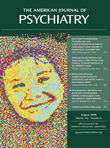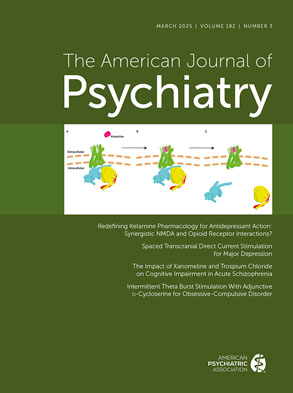To the Editor: Dr. Brent et al.
(1) provided excellent detail about self-harm events during the Treatment of SSRI-Resistant Depression in Adolescents (TORDIA) trial. The authors observed that venlafaxine is associated with greater risk of self-harm in adolescents with higher than median suicidal ideation when compared with SSRI treatment. These results are consistent with theory and analysis put forth by myself
(2) and others
(3) indicating that risks of suicidal ideation/behavior in adolescent antidepressant trials correlate significantly with antidepressant half-life. I would like to request that the authors take advantage of TORDIA’s unique data (randomizing to four antidepressants of substantially different half-life) by presenting rates, by individual antidepressant, of self-harm and suicidal adverse events in the total sample and among those participants with higher baseline suicidal ideation.
The antidepressant half-life theory predicts that a general pattern would be observed, i.e., venlafaxine would likely have the numerically highest event rates, paroxetine the next highest, etc. To maximize sample size, I would suggest combining participants receiving a specific antidepressant alone with participants receiving that antidepressant plus cognitive behavior therapy. However, caveats definitely exist. First, with only four medications, any relationship will almost certainly not reach statistical significance, even if suicidality risks rank in perfect register with the medication half-lives (unfortunately reported most consistently for adults, not adolescents). Second, while the Food and Drug Administration (FDA) meta-analysis found that fluoxetine had one of the lowest rates of suicidal ideation/behavior, its rates were similar to those for citalopram
(4) . For both these reasons, it would be interesting to also compare the rate of self-harm and suicidal adverse events of the combined participants receiving venlafaxine and paroxetine with the combined participants receiving citalopram and fluoxetine. Last, TORDIA might show a different pattern of risk by half-life because, in the FDA meta-analysis (
4, p. 122–123), the rate of suicidal events with fluoxetine and citalopram peaked earlier in treatment than with paroxetine, and the TORDIA trial has the highest rates of self-harm early in treatment.
Despite these potential limitations, it is important to our patients that psychiatry continues to investigate whether a small but genuine increased risk of suicidal behavior exists early in antidepressant treatment and, if so, the ultimate biological mechanisms by which such risk occurs (and might be prevented). Exploring the antidepressant half-life theory in the TORDIA sample would be one important contribution.

